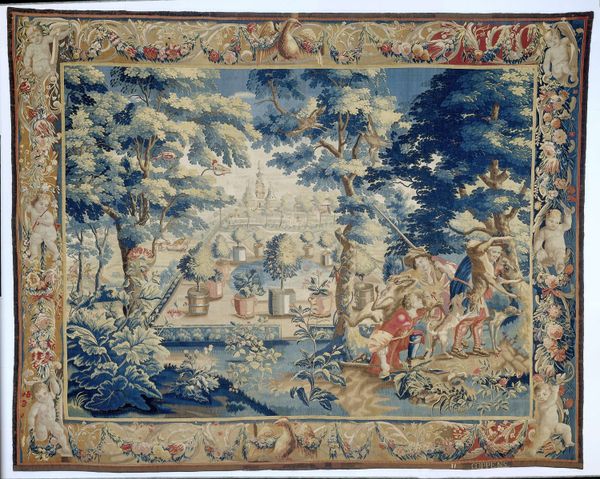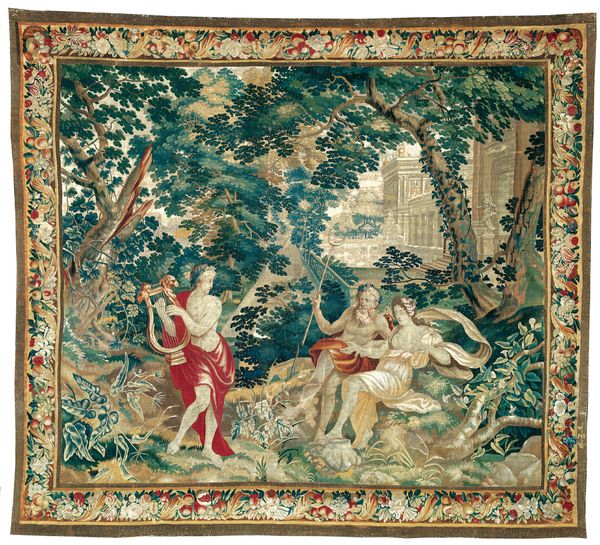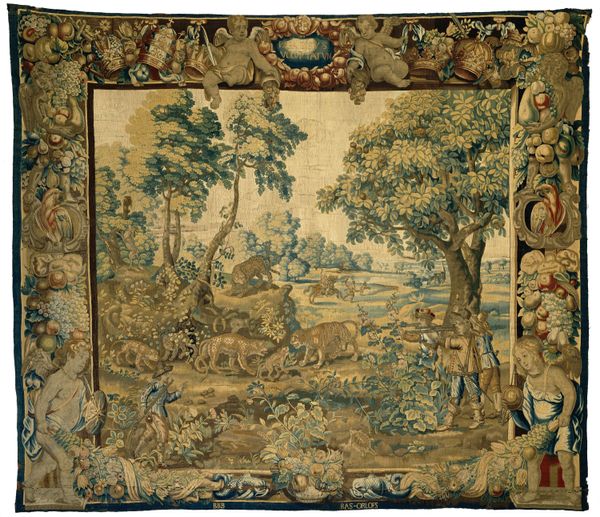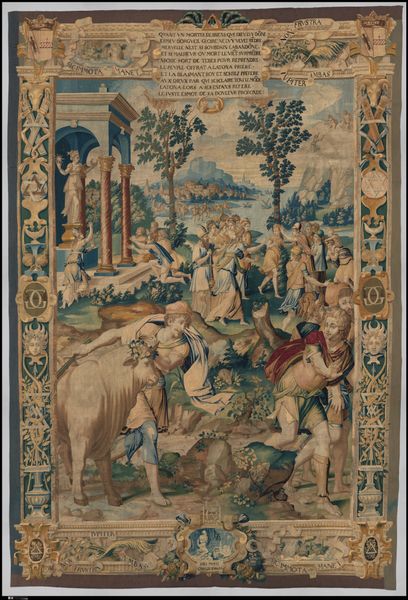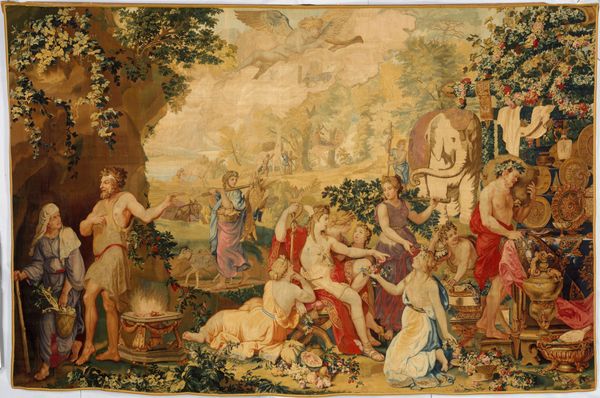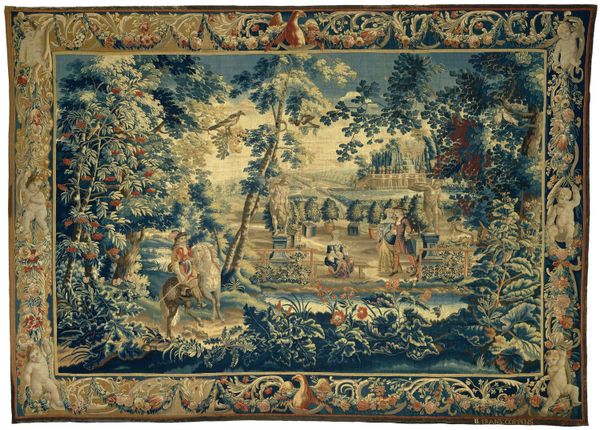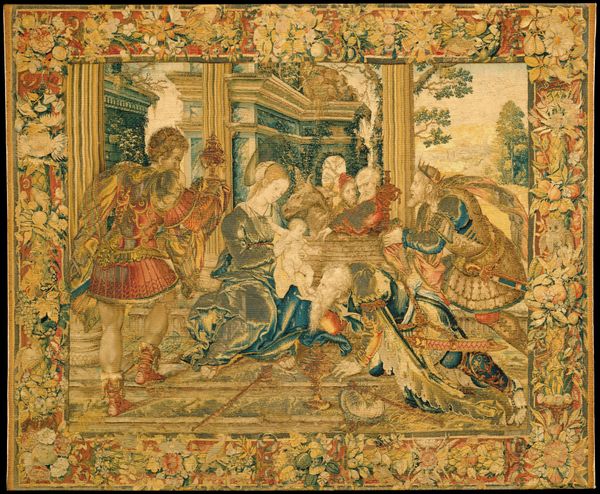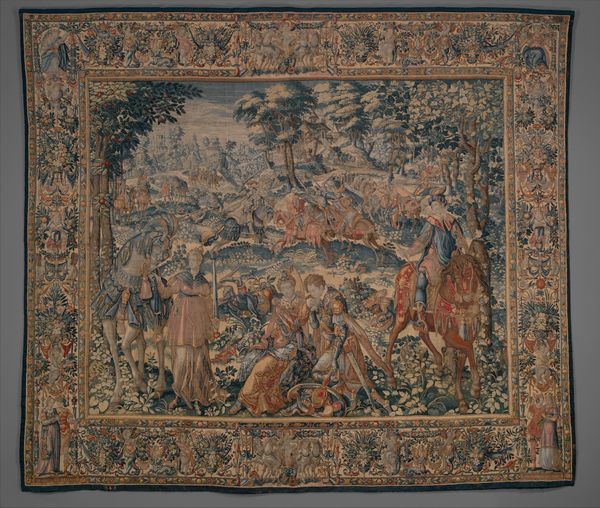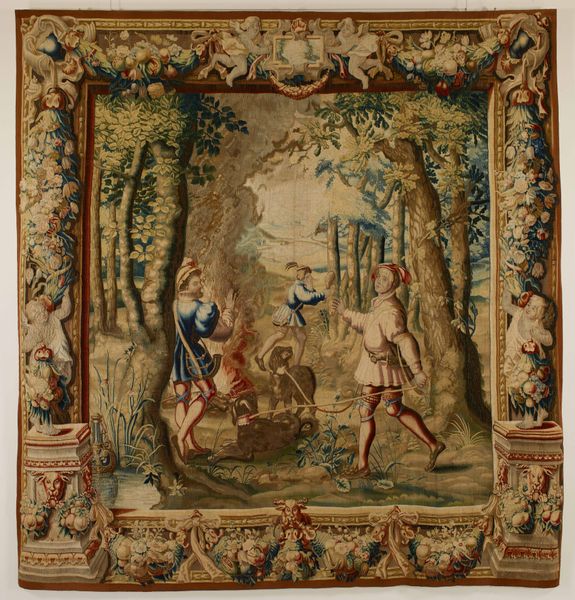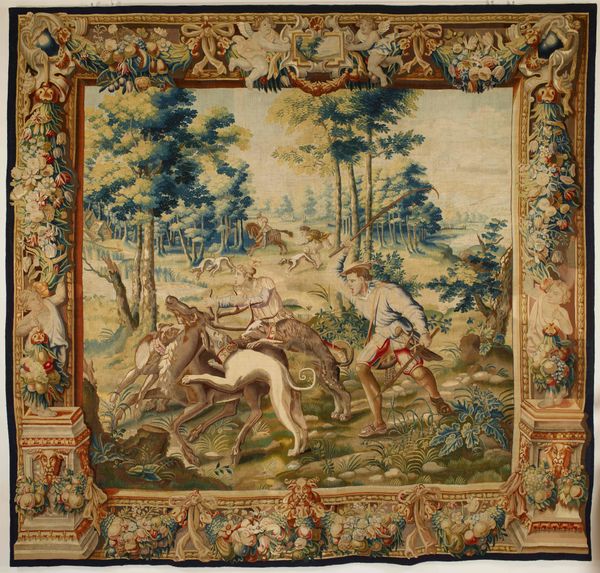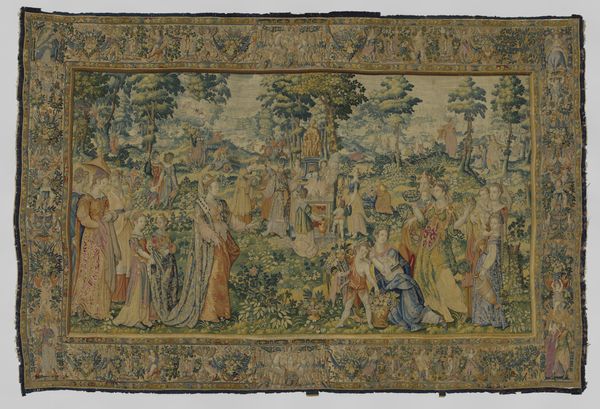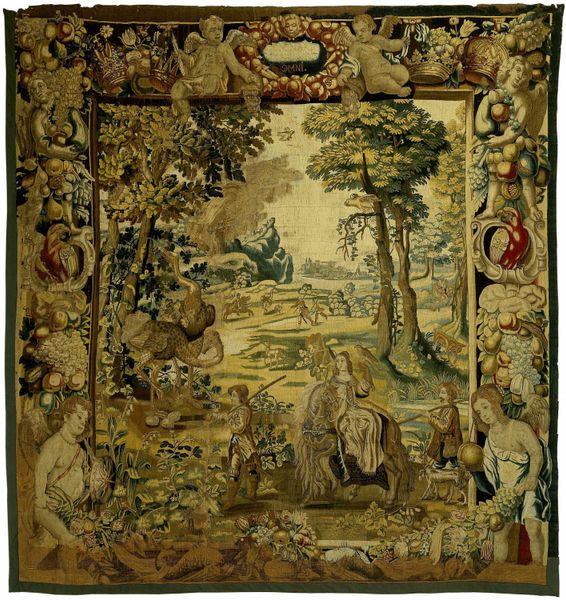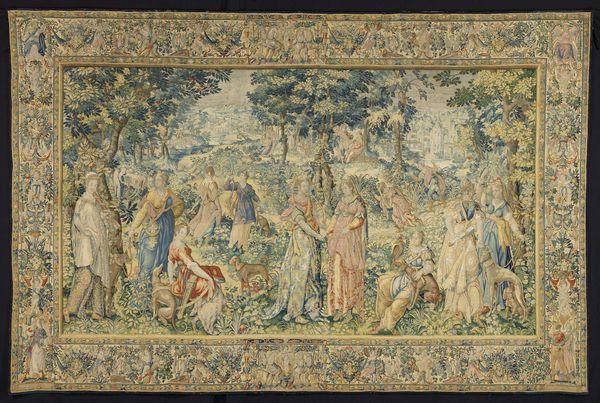
Erminia and the Shepherd (from a set of Scenes from Gerusalemme Liberata) 1684 - 1739
0:00
0:00
weaving, textile, sculpture
#
baroque
#
weaving
#
landscape
#
textile
#
figuration
#
oil painting
#
child
#
sculpture
#
horse
#
men
#
genre-painting
#
history-painting
#
decorative-art
#
watercolor
Dimensions: 11 ft. 11 in. × 15 ft. (363.2 × 457.2 cm)
Copyright: Public Domain
Curator: Here we have "Erminia and the Shepherd (from a set of Scenes from Gerusalemme Liberata)", a tapestry dating roughly from 1684 to 1739. Editor: It feels… nostalgic. A slightly faded fairytale world. All soft focus and gentle pastoral vibes, framed by those muscular sculpted figures at the sides and the cherubs! Curator: Tapestries like this one, based on episodes from Torquato Tasso's epic poem, "Gerusalemme Liberata," were luxury items, displayed in aristocratic homes as symbols of wealth, education, and refined taste. We believe that Domenico Paradisi designed this work, so let’s dive into some history and social meaning here. Editor: Domenico...I like that name! And those gentle goats. You almost want to sink into it like a nap after too much wine and bread! Erminia's offering feels significant, too, those red flowers, bold amidst the muted greens and browns. A warrior stepping into peace. Maybe it is meant to soothe? It makes me yearn. Curator: That offering from the character Erminia represents a significant shift. She’s abandoning her role as a warrior. This is key—these tapestries softened the narratives; violence was toned down for domestic settings, presenting idealized visions of harmony and order to their wealthy patrons. Editor: Idealized maybe… look at those earthy shepherds. A touch grubby for high society but charming nevertheless. Though, let’s be real, running your hands over the threads of that tapestry? That would be something. Curator: Exactly. Touch, sight, narrative; this was meant to construct a narrative of cultural prestige. Its placement, context and ownership formed the tapestry's overall meaning, far beyond just its design. The poem itself touches upon cultural anxieties around the crusades. Editor: Hmmm, food for thought. You see the cultural construction, and I see the beauty trying to wriggle free, like a wildflower in the cracks of pavement. The details pull you into another reality. Curator: Well, I am more interested in the framework through which that "beauty" was understood, marketed, and ultimately consumed within a very specific societal strata. Thanks for taking the time to appreciate this work with me! Editor: Any time! I’ll be back with some yarn, let's patch up a new reality... maybe with dragons!
Comments
No comments
Be the first to comment and join the conversation on the ultimate creative platform.
